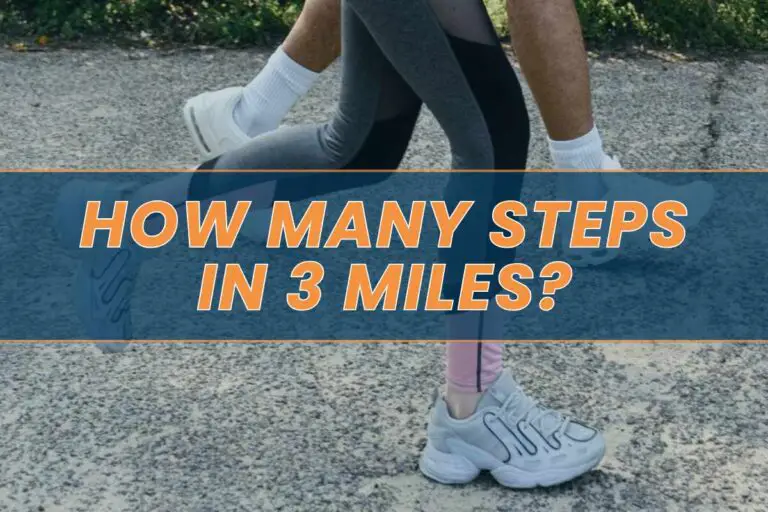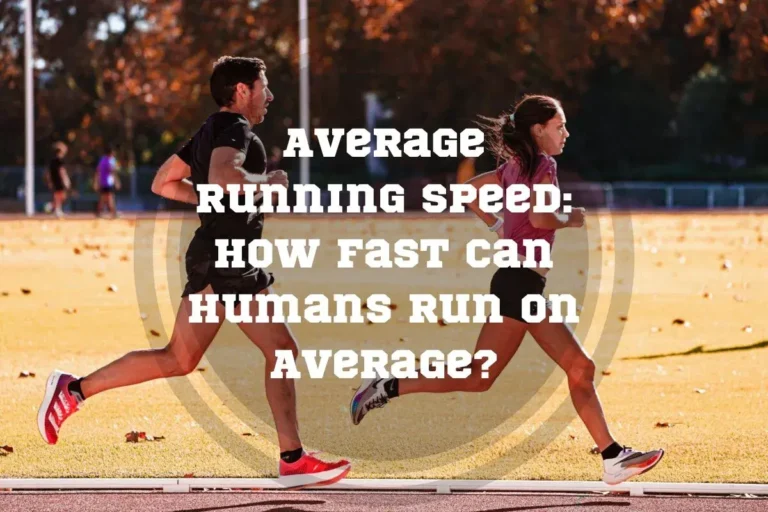Running vs Sprinting – Which Is Right For You?
How different are these really? Running vs sprinting, do you really need to choose between the two? Is one better than the other?
They both involve putting one foot in front of the other, get your heart rate up, and have a lot of benefits. The latter, however, vary a lot. You may think running and sprinting are kind of like twins, but it’s better to think of them like cousins: they’re kind of alike, but actually different.
Running and sprinting require different techniques and cater to different fitness goals, so it’s important to learn the mechanics and training each method needs. And don’t worry about your fitness level, because it doesn’t matter if you’re a newbie or experienced — there’s something for everyone here!
So, what’s the difference between running and sprinting?
Fasten your laces and let’s find out!
What Is the Difference between Running vs Sprinting?
Running is moderately paced and focuses on endurance and aerobic fitness. Sprinting, on the other hand, is all about high-intensity bursts of speed and power and targets anaerobic capacity and muscle strength.

What Is Running?
Everyone knows what running is, and although not everyone has tried sprinting, we’ve all at least tried to run.
This is one of the most well-known, versatile forms of physical activity, and there are a lot of different forms of running – jogging and endurance running included.
Jogging is somewhere between walking and running (3.7-5 mph is considered jogging). It’s a more steady, relaxed, and it’s a low-impact form of exercise. It’s great for cardiovascular health, and it can also help with weight management.
Endurance running, on the other hand, is also called long-distance running and focuses on covering a substantial distance at a sustainable pace. For example, a running marathon would be considered endurance running. It will test your cardiovascular stamina, muscle endurance, and mental resilience.
Generally, running can be a leisurely jog around a park or a grueling marathon. Regardless of the form, it has a lot of health benefits, from improving cardiovascular fitness and mental health to burning calories, enhancing endurance, and even reducing the risk of premature mortality (which is a fancy way of saying running can help you live longer).
The best thing about running is that it can be done by people of all fitness levels.
5 Main Types of Runs
You can run in a lot of different ways, which is why running is so versatile.
- Endurance Runs
We’ve already covered endurance runs, which are usually seen in marathons or ultramarathons. - Interval Runs
Interval runs alternate between short, intense bursts of speed and periods of active recovery. Interval runs promote speed and anaerobic fitness. - Tempo Runs
Tempo runs are about keeping a sustainable but challenging pace. It enhances lactate threshold and overall race-day performance. - Fartlek Runs
Fartlek runs are by far the most fun. They’re unstructured, playful, and blend varying speeds and terrains. This type of running promotes both anaerobic and aerobic development. - Easy Runs
If you want something less challenging than the above, you should go for easy runs. If you’ve ever seen people sort of running but also chatting at the same time, then you know what an easy run is. It’s a great way for beginners to start running, but it can also serve as a recovery run.
What Is Sprinting?
You may think sprinting is much like running, and you won’t be completely wrong, because sprinting is a form of running. Is sprinting faster than running? Yes, it absolutely is.
Sprinting is all about explosive power, speed, and energy bursts. It engages fast-twitch muscle fibers and needs a rapid release of energy. This short burst of intensity actually has a lot of benefits, so even though it’s going to be a bit of a butt-kicker, you’ll get a lot out of it.

It’s excellent for cardiovascular fitness because it increases your heart rate and oxygen consumption, which improves the overall health of the circulatory system. It can also do a lot in terms of your metabolism and can be efficient for calorie-burning and fat loss. Since sprinting is so intense, it can also help build muscle strength (especially in the lower body).
Sprinting is a practical tool for those who want to improve their agility, speed, and power. Think of sports like soccer or basketball – you’ll often see sprinting included into the athletes’ training because it can give them a competitive edge.
5 Tips for Proper Sprinting Form and Technique
If you’re looking to perfect your sprinting motion, then here are a number of aspects that you might need to pay close attention to.
1. Superb Form
You don’t need to be a professional to know that form is everything when it comes to fitness in general. If your form is off, then your entire workout is off. This is true for sprinting as well. Without proper form, you won’t get all of the benefits sprinting offers.
2. Explosive Start and Propulsion
There are a few things to keep in mind. First, start with a powerful, explosive push-off from the balls of your feet and propel yourself forward with each stride. Your posture needs to be upright, core engaged, shoulders relaxed, and arms pumping rhythmically in sync with your leg movement.
3. Knee Drive and Stride
Maintain a high knee drive and go for a balance between stride length and frequency.
4. Ground Contact
The contact with the ground needs to be quick, and you should strike the ground with the balls of your feet, driving through with strong ankle dorsiflexion.
5. Direction and Speed
You’ll want to keep your speed at max, so it’s important to keep a straight line of forward movement while aiming for maximum achievable speed.
Sounds like a lot, right? You wouldn’t think there’s so much stuff to think about, but you don’t need to stress yourself over it. Proper form comes with practice — just do your best and your form should be great in no time.
7 Differences Between Running and Sprinting
Whether you’re sprinting or running, you’re moving fast and on your feet. They seem a lot alike, but when you put sprint vs run side to side, you can see that they actually differ quite a bit. This is a good thing, because it makes them suitable for distinct purposes and different people.

1. Fat Loss
One of the categories people are the most interested in – sprinting vs running for fat loss. Running (especially endurance running) is better for fat loss because it engages the body’s fat-burning mechanisms over longer periods of time.
Although sprinting is very intense and can be excellent for overall calorie burn, it’s not as good for fat loss as running.
2. Health
Both sprinting and running are great for your health. That’s why this category has no winner. They have a lot of health benefits and improve cardiovascular fitness and reduce the risk of chronic diseases. They’re also fantastic for your mental health.
You’ll still see a lot more people run than sprint, because it’s more accessible due to it being less intense.
3. Cardiovascular Health
Running takes the cake because it’s known for its ability to improve heart and lung function, especially when it’s done at a moderate pace.
Is sprinting cardio? It is, and it also promotes cardiovascular health, but not as effectively as running.
4. Calories Burned
If calorie burning is your priority, then sprinting is your best choice. It burns more calories in a shorter amount of time because it’s so intense. Nevertheless, running can also contribute to calorie burning, especially if it’s long-distance.
5. For Beginners
When it comes to what’s more beginner-friendly, then sprinting can’t even compare to running. Running, especially jogging, is a much better choice for beginners because it allows them to build up their endurance gradually.
Sprinting is physically demanding and can be hard to do for someone that has little to no experience.
6. Muscle Building
Since it needs a lot of explosive power, sprinting is much better than running when it comes to building muscle, especially in the lower body.
Subscribe to Our Running Newsletter!
Get free running tips from renowned professional athletes and discounts from top-notch brands.
7. Speed and Power
Sprinting is designed to improve speed and power, so if that’s your priority, don’t bother with running as much, since it focuses more on endurance.
Sprinting is an excellent choice for athletes in sports like track and field, and you’ll often see it included in their training sessions.
Running/Sprinting Differences
| CHARACTERISTIC | RUNNING | SPRINTING |
|---|---|---|
| Fat Loss | Better for fat loss; engages fat-burning mechanisms over longer periods. | Less effective for fat loss. |
| Health | Both have health benefits and improve cardiovascular fitness and mental health, but running is more accessible. | Both contribute to overall health, but sprinting is less accessible than running. |
| Cardiovascular Health | Improves the capacity of the heart and the lungs, especially when done at a moderate pace. | Promotes cardiovascular health, but not as effectively as running. |
| Calories Burned | Contributes to calorie burning. | Burns more calories in less time because it’s highly intense. |
| For Beginners | Better for beginners. | Challenging and not the best for beginners. |
| Muscle Building | Not very effective for building muscle. | Better for muscle development than running. |
| Speed and Power | Focuses on endurance. | Designed to improve speed and power. |
Running vs Sprinting: Summary
If you want to see whether sprinting or running would be a better choice for you, you need to take two things into account – your fitness levels and your goals.
Are you a beginner or do you have experience with running and exercise in general? Beginners will find sprinting very challenging, so you may want to start with running if that’s the case for you. Distance running vs sprinting is a clear contrast in terms of how much energy you need and how many muscle fibers are engaged during each of these activities.
However, if you’re experienced, then your fitness level won’t prevent you from sprinting.
Your goals also play a part here. We’ve already gone over the benefits, so you know what to expect from each. Think about your priorities and then decide what would work better.
To make your choice even easier, let’s put running and sprinting side by side and compare their pros and cons.
Pros, Cons, and Common Mistakes of Running
| Category | Pros | Cons | Common Mistakes |
|---|---|---|---|
| Accessibility | Suitable for all fitness levels, versatile | n/a | n/a |
| Benefits | Cardiovascular health, endurance, weight management | Requires consistent effort | Inconsistent training regimen |
| Form & Posture | Proper form improves life quality | Improper form risks discomfort, pain, and injury | Hunching, overstriding |
| Pace & Training | Adjustable to fitness goals | Can lead to overstraining | Inadequate pace, no structured plan |
| Rest & Recovery | Essential for best results | Often neglected or undermined | Overtraining, lack of recovery days |
Running is very accessible, and that’s what everyone loves about it. You can be a complete beginner and still enjoy running and get all of the benefits it offers. And speaking of benefits, there’s many of them – better cardiovascular health, more endurance, weight management, etc. It’s versatile and can be adjusted to your fitness level and to your goals.
Of course, it’s not all that simple. You can make mistakes when running, and they can cost you. The most common mistake is improper form, which means you may be hunching or overstriding during your run. This can lead to a lot of discomfort and even injury. This is why you should focus on balancing the right pace and keeping your posture upright. Besides, you should avoid overtraining. Remember that rest is important, and the best results come from a structured training plan.
Pros, Cons, and Common Mistakes of Sprinting
| Category | Pros | Cons | Common Mistakes |
|---|---|---|---|
| Accessibility | Suitable for experienced athletes | Not ideal for beginners | Starting unprepared |
| Benefits | Speed, explosiveness, power, muscle development, high-calorie burn | Higher risk of injury | Poor form |
| Preparation & Warm-Up | Crucial for performance | Often skipped or overlooked | No warm-up, no cool-down |
| Intensity & Training | Swift progression is possible | Risk of overtraining | Overexertion, neglecting one’s limits |
| Rest & Recovery | Essential for best results | Often neglected or undermined | Overtraining, lack of recovery days |
Sprinting is a very dynamic and intense form of running that’s not the best for beginners. It suits people who are experienced and want to improve their speed, power, and even muscle development. It’s also quite time-efficient because of its explosive nature, and the amount of calories burned by sprinting is impressive.
It does have its challenges, though. Since the intensity is a lot higher than with running, there’s more risk of injury, especially if you don’t keep your form correct.
One of the most common mistakes is starting your sprint unprepared and skipping the warm-up. However, since sprinting is so intense, you absolutely need to make sure to prepare your muscles first, even if it’s with just 5 minutes of dynamic stretches. After you’re done with the workout, make sure to take a few minutes to cool down.
Overtraining is another issue. Know your limits and don’t push yourself too hard. Everyone wants to progress and that’s fine, but you shouldn’t end up overly exhausted or, in some cases, injured after your workout.
Sprint vs Run: When to Choose Which
This is something that depends completely on you – once you’re familiar with what sprinting and running offer and what their differences are, you need to make a choice based on your goals.
When to run / when to sprint?
| CATEGORY | RUNNING | SPRINTING |
|---|---|---|
| Suitability | All fitness levels | Experienced athletes |
| Benefits | Cardiovascular health, weight management, endurance | Speed, power, muscle development, explosiveness |
| Frequency | Daily | Requires more rest days |
| Pre/Post Workout | Less critical (but desirable) | Warm-up / cool-down essential |
| Objective & Goals | Foundation for fitness routines, way of life, can be competitive, highly versatile | Intense workouts, very competition-oriented, for dedicated athletes |
Running is one of the most popular and well-known physical activities in the world and is suitable for people of all fitness levels. You can go for a refreshing jog around the park or test your endurance with long-distance runs. It’s also ideal as a foundation for fitness routines: it helps with weight management and can do wonders for your cardiovascular system.
Sprinting is a bit of a different matter – it’s designed to boost speed, power, and muscle development, so it’s a great addition to athletes’ workouts or pretty much anyone looking for a super intense workout.
You can, of course, combine the two, but if you decide to do that, keep in mind that you need to vary the intensity of your workouts and you should never skip warming up and cooling down. Make sure your fitness level will allow you to jog and sprint during the same workout session, so you don’t risk overtraining and do not skip those rest days.
Regarding the frequency of running and sprinting – it’s another thing that depends on your priorities. Running is less challenging, so you can do it almost every day, but sprinting is very demanding, and you should allow your body to rest for a day or two between the workouts.
FAQ
Is sprinting better than jogging?
Is sprinting better than jogging? There is no definite answer to this question, because jogging and sprinting serve different purposes. If your priority is improving speed and power, then sprinting is your best bet. Jogging is better for improving cardiovascular endurance and overall health.
How to prevent injury while sprinting, running, or jogging?
Start with each workout with a warm-up to prepare your muscles and make sure you’re wearing comfortable running shoes. Keep your form correct (neutral posture, relaxed shoulders) in order to minimize the stress that is put on your joints. Another important thing is to make sure you allow yourself enough time to progress. You can up your speed and intensity, but do it slowly. Do post-workout stretching and make sure to give your body sufficient time to recover. Rest days are important, so take a day or two out of each week to relax and let your muscles recuperate.
Does sprinting build more muscle than jogging?
Yes, it does. Sprinting is all about powerful and explosive movements that engage fast-twitch muscle fibers, especially in your lower body. These high-intensity bursts stimulate muscle growth and development.
Is sprinting and running the same thing?
Many people seem to think that it is, but it’s not – sprinting and running are not the same. Sprinting is a very short-duration activity, while running refers to a much wider range of paces and durations (from slow jogging to long-distance) and focuses on endurance.
Conclusion
Running and jogging, sprints vs long distance… Have you made your choice yet? Will you be focusing more on running or sprinting? It doesn’t matter if you can’t decide – you can do both. Just keep in mind that your form needs to be correct, and you shouldn’t skip rest days. Whatever you decide to do, the most important thing is that you’re physically active.
I’d love to hear your thoughts! Which do you prefer when it comes to sprinting vs running? Do you combine the two? Are there any specific running or sprinting routines you’ve found work exceptionally well? Do you have a pair of running shoes to recommend?
Leave a comment and share any tips you have!
Running out!
Also Read:
- Best Running Parachute
- Best Shoes for Haglund’s Deformity
- Best Shoes for Hip Bursitis
- Can You Run in Basketball Shoes
- Can I Take Pre Workout Before a Run
- Is Nike True to Size
- Best Shoes for Peroneal Tendonitis
- What Is a Good 10K Time by Age
- Can You Run After a Total Knee Replacement
- How Many Miles Is 14000 Steps
References:
- Stacey Carter, “Why It’s Important to Cool Down After Exercise, According to the Science,” LiveScience, https://www.livescience.com/why-its-important-to-cool-down-after-exercise-according-to-the-science (accessed Oct. 13, 2023).
- Sergi Nuell, Víctor R Illera-Domínguez , Gerard Carmona , Xavier Alomar , Josep Maria Padullés, Mario Lloret , Joan Aureli Cadefau, “Hypertrophic Muscle Changes and Sprint Performance Enhancement during a Sprint-Based Training Macrocycle in National-Level Sprinters,” National Library of Medicine, https://pubmed.ncbi.nlm.nih.gov/31526116/ (accessed Oct. 13, 2023).
- Duck-Chul Lee, Angelique G. Brellenthin, Paul D. Thompson, Xuemei Sui, I-Min Lee, Carl J. Lavie, “Running as a Key Lifestyle Medicine for Longevity,” ScienceDirect, https://www.sciencedirect.com/science/article/abs/pii/S0033062017300488 (accessed Oct. 13, 2023).
- J. D. Cantwell, “Cardiovascular Aspects of Running,” National Library of Medicine, https://pubmed.ncbi.nlm.nih.gov/3902253/ (accessed Oct. 13, 2023).
- “How Does Exercise Strengthen the Lungs?“, American Lung Association, https://www.lung.org/lung-health-diseases/wellness/exercise-and-lung-health (accessed Oct. 13, 2023).
- Hyoung-Kil Park, Min-Kyung Jung, Eunkyung Park, Chang-Young Lee, Yong-Seok Jee, Denny Eun, Jun-Youl Cha, and Jaehyun Yoo, “The Effect of Warm-ups with Stretching on the Isokinetic Moments of Collegiate Men,” National Library of Medicine, https://www.ncbi.nlm.nih.gov/pmc/articles/PMC5833972/ (accessed Oct. 13, 2023).
- “Minutes of Hard Exercise Can Lead to All-Day Calorie Burn,” ScienceDaily, https://www.sciencedaily.com/releases/2012/10/121010161840.htm (accessed Oct. 13, 2023).
- Tim Jewell, “What Are Fast Twitch Muscles?,” Healthline, https://www.healthline.com/health/fast-twitch-muscles (accessed Oct. 13, 2023).
If you have any questions or suggestions, you can contact us via email – [email protected]






